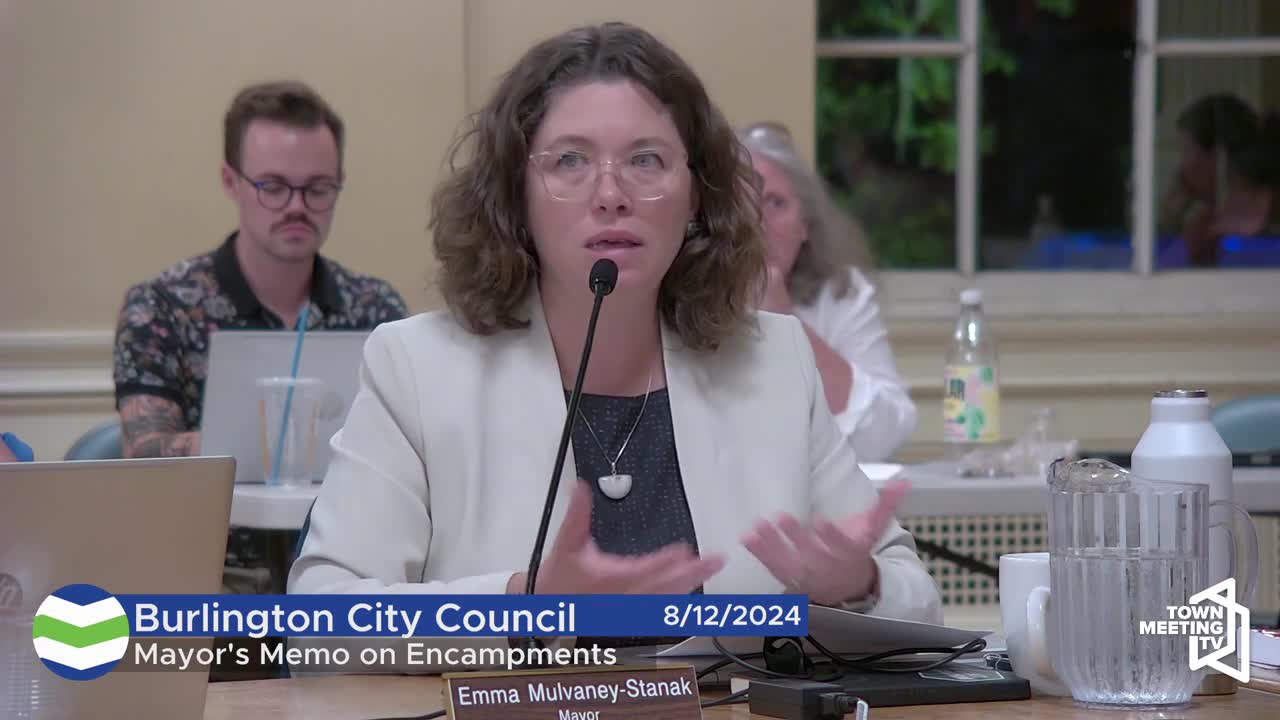Burlington faces urgent crisis as unsheltered homelessness surges
August 12, 2024 | Burlington City, Chittenden County, Vermont
This article was created by AI summarizing key points discussed. AI makes mistakes, so for full details and context, please refer to the video of the full meeting. Please report any errors so we can fix them. Report an error »

In a recent government meeting, Burlington officials addressed the escalating homelessness crisis in the city, emphasizing the urgent need for low-barrier emergency shelter capacity and collaborative efforts with neighboring towns. Mayor Sarah and city officials highlighted the alarming rise in unsheltered individuals, with over 315 reported in July alone, surpassing previous years' figures. This increase has prompted the city to apply for a share of a $10 million state fund aimed at expanding emergency shelter options for the winter months, with a long-term vision for year-round solutions.
The discussions underscored the complexity of the situation, with officials acknowledging that Burlington cannot shoulder the burden of homelessness alone. They stressed the importance of viewing surrounding towns as partners in addressing the crisis, advocating for a coordinated legislative agenda to tackle the issue collectively. The city is exploring various locations for potential shelters, including the former Social Security Administration building, while also recognizing the necessity of providing support for individuals struggling with substance use and mental health issues.
Council members raised concerns about the impact of shelters on local neighborhoods, particularly regarding increased drug activity and safety. Councillor McKnight urged for comprehensive planning that considers the broader implications of shelter placements, advocating for robust security measures to ensure community safety. The need for a holistic approach to sheltering, which includes not only immediate housing solutions but also long-term support and treatment options, was a recurring theme.
As the city prepares for potential cutbacks in motel stays for families experiencing homelessness, officials anticipate a further strain on resources and services. The meeting concluded with a call for continued dialogue and collaboration among city leaders, social service providers, and the community to develop effective strategies that address both the immediate needs of the unhoused population and the long-term goal of sustainable housing solutions.
The discussions underscored the complexity of the situation, with officials acknowledging that Burlington cannot shoulder the burden of homelessness alone. They stressed the importance of viewing surrounding towns as partners in addressing the crisis, advocating for a coordinated legislative agenda to tackle the issue collectively. The city is exploring various locations for potential shelters, including the former Social Security Administration building, while also recognizing the necessity of providing support for individuals struggling with substance use and mental health issues.
Council members raised concerns about the impact of shelters on local neighborhoods, particularly regarding increased drug activity and safety. Councillor McKnight urged for comprehensive planning that considers the broader implications of shelter placements, advocating for robust security measures to ensure community safety. The need for a holistic approach to sheltering, which includes not only immediate housing solutions but also long-term support and treatment options, was a recurring theme.
As the city prepares for potential cutbacks in motel stays for families experiencing homelessness, officials anticipate a further strain on resources and services. The meeting concluded with a call for continued dialogue and collaboration among city leaders, social service providers, and the community to develop effective strategies that address both the immediate needs of the unhoused population and the long-term goal of sustainable housing solutions.
View full meeting
This article is based on a recent meeting—watch the full video and explore the complete transcript for deeper insights into the discussion.
View full meeting